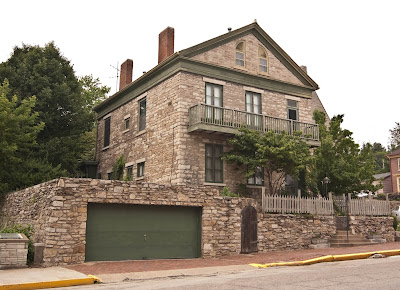Readers may wonder why there continue to be pictures of rivers. Two reasons, rivers were important markers to the travelers going west and Alonzo always mentions them in his journal—even creeks get a mention—and it’s a way for me to document them as I travel west. I’ve been using Alonzo’s spelling of the Platt, but for the sake of Google searchers I’m going to switch to the accepted version, Platte.
(Double click on photos for a larger image)

Just west of Grand Island, south of the village of Alda, the Hall County Historical Society owns a two acre piece of land with wagon ruts that date to Brigham Young's first trek west in 1847. With the heavy rains and high grass this year you’ll have to use a little imagination to see them.



August 5th Alonzo and his group camped on Elm Creek with the Mormons and made the necessary arrangements to join them, “ . . . for our safety and mutual protection and at this time I have the honor to be selected as Captain of our company. A great promotion indeed.” Alonzo was elected Captain to fit in with the Mormon train which was divided into groups of approximately ten people with a captain heading each of them.

I camped in a motel at North Platte where the annual rodeo was in full swing. The next morning as I left town I thought I was taking this westward trek entirely too seriously as I saw covered wagons coming down the road toward me.


It was a tour group from Council Bluffs following the trail almost as it was done in the past, camping overnight along streams or rivers, and moving at the pace of a horse.
Originally called the Nebraska, La Chata, or La Plat by the Indians, Spanish, and French—all of which mean shallow of flat—the Americans added the “te" to Plat. Alonzo often refers to it as the Nebraski or Platt. The river divides at North Platte and the Mormon trail turns northwest near Ogallala, NE following the North Platte River.


It’s here I leave Hwy 30 and follow the river up Hwy 26/92 which provides some lovely vistas toward the next stop at Ash Hollow.








































